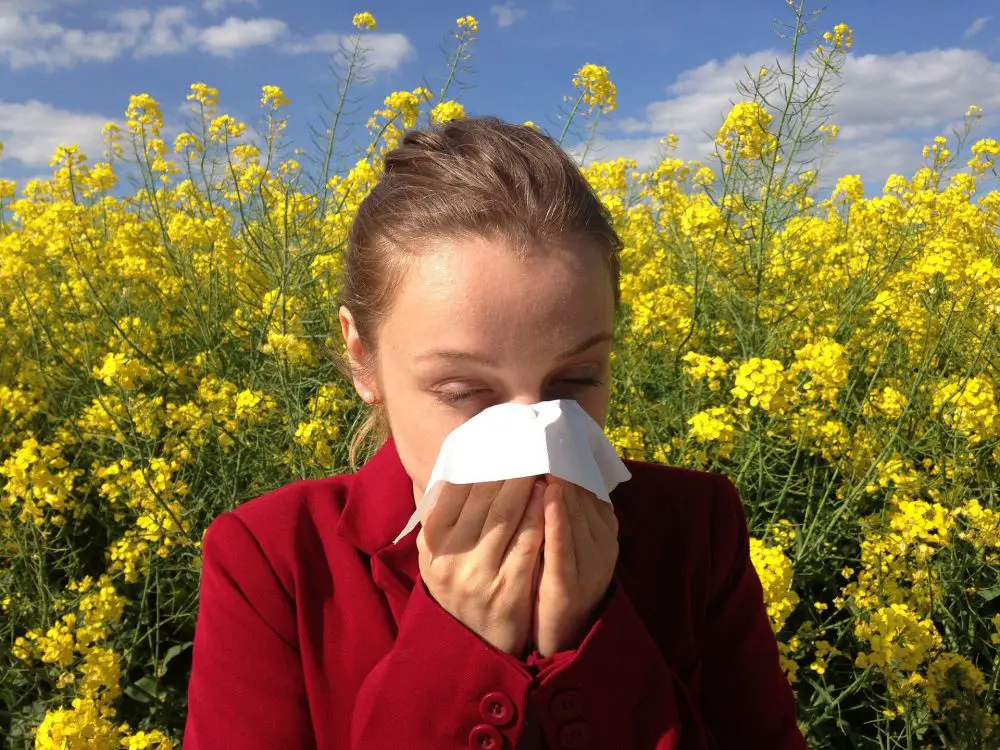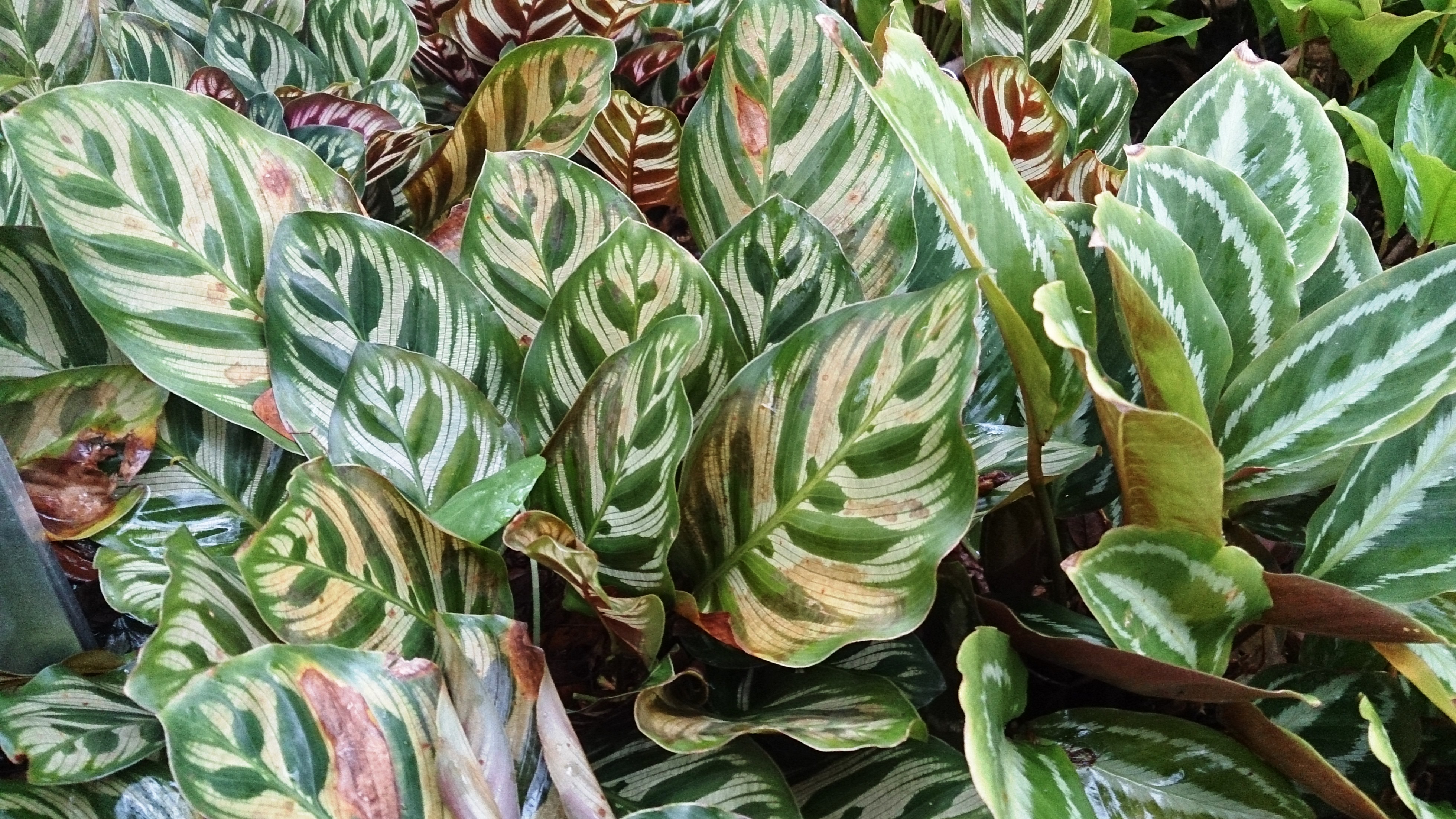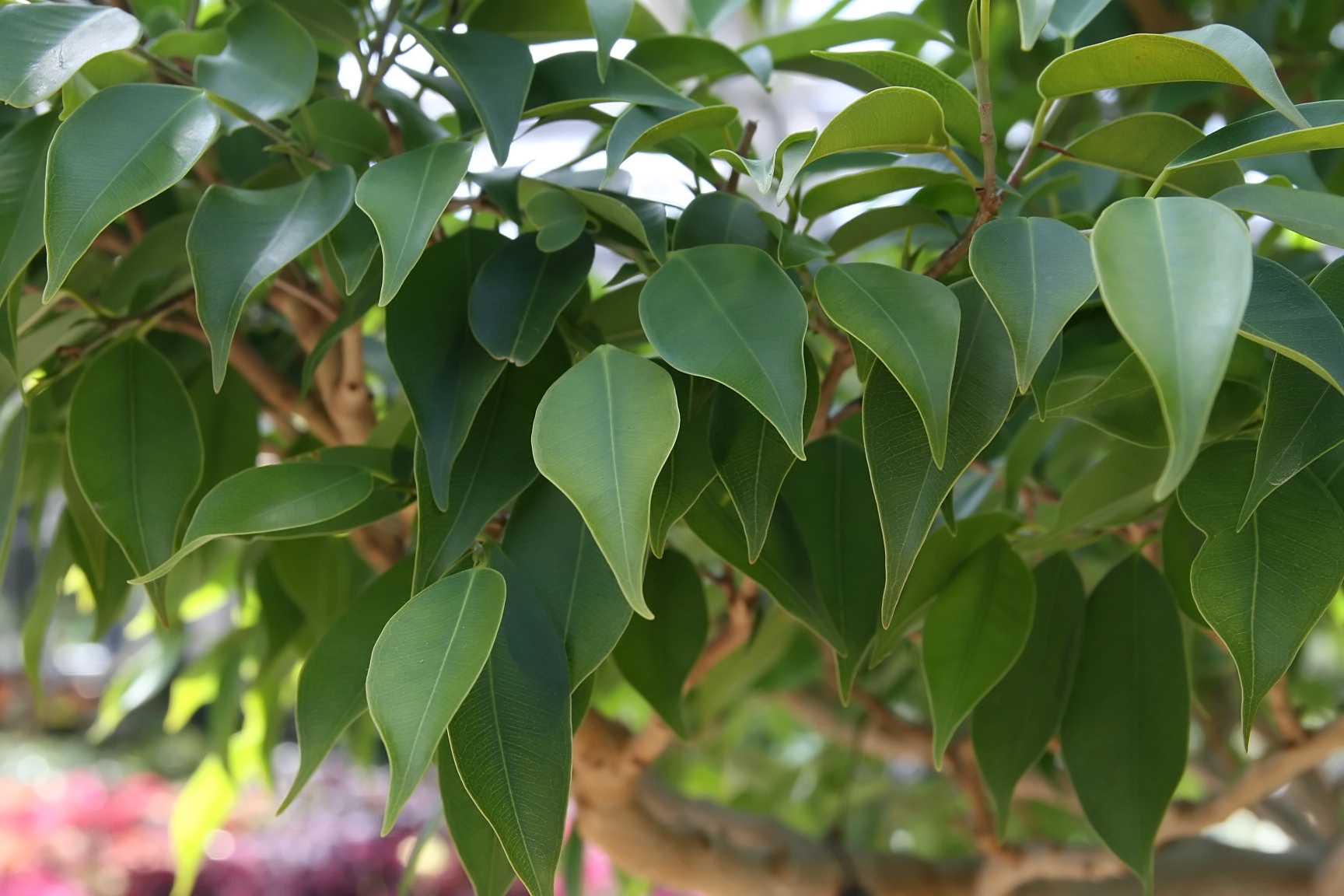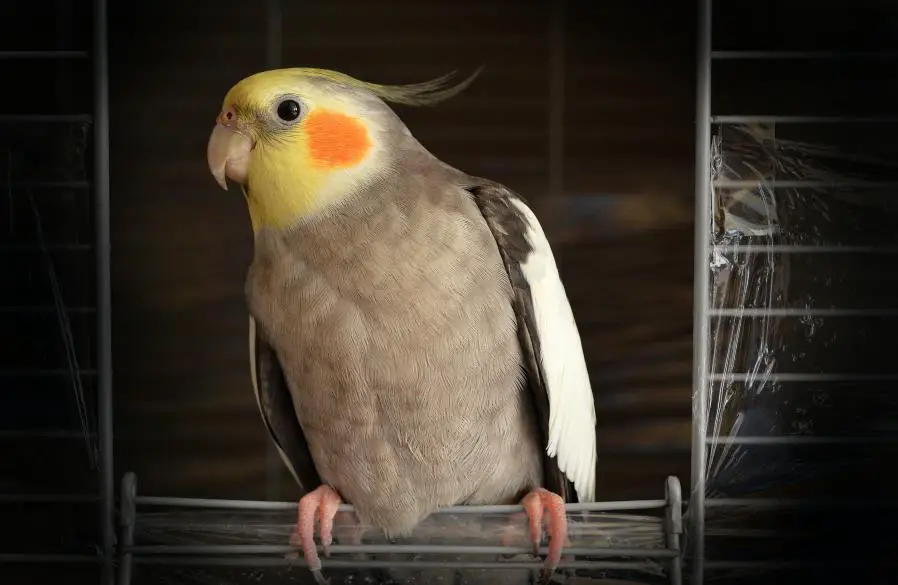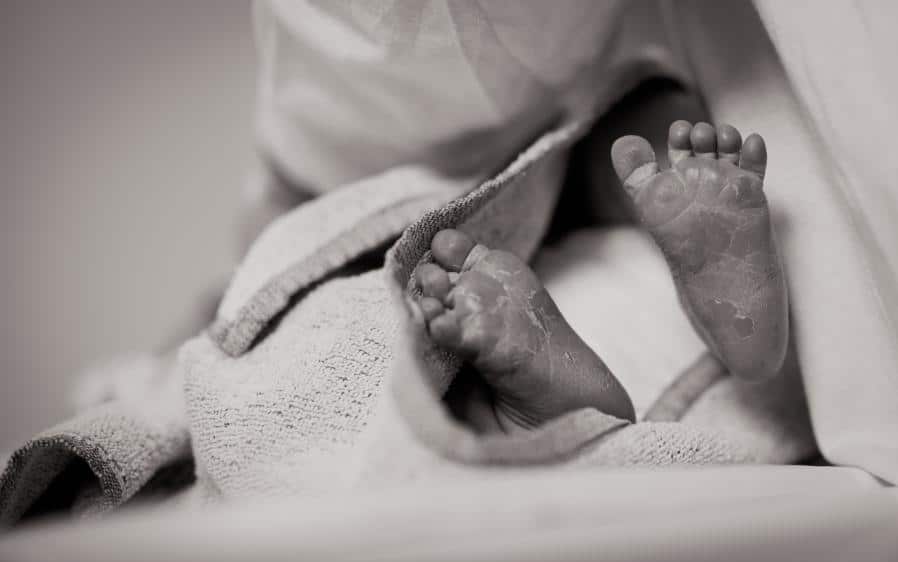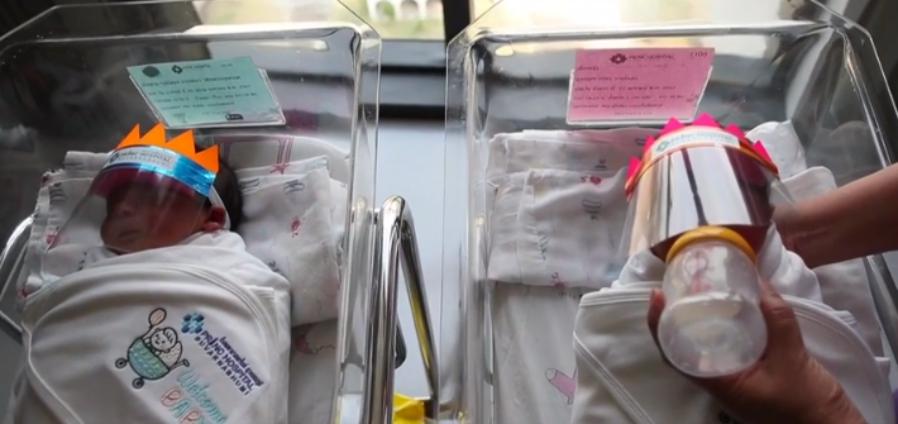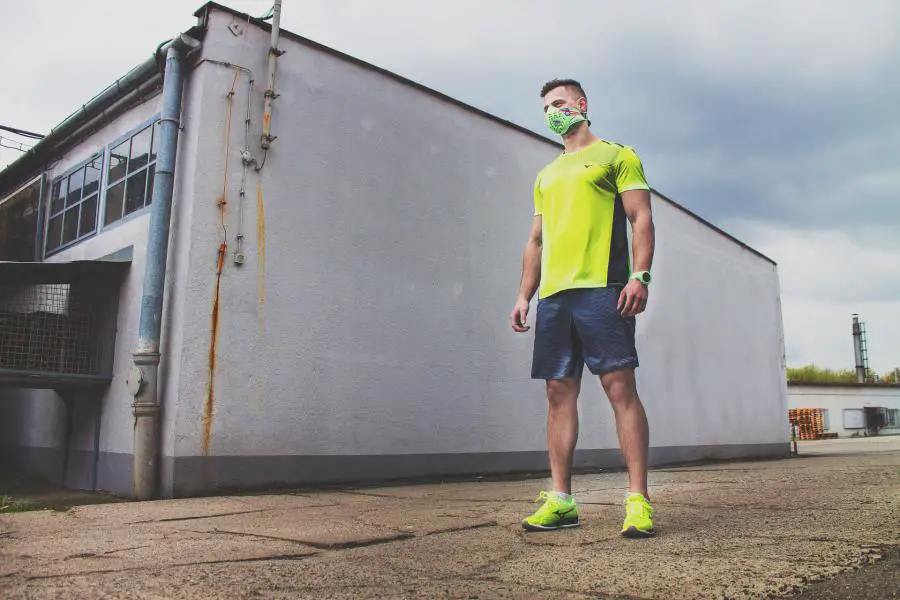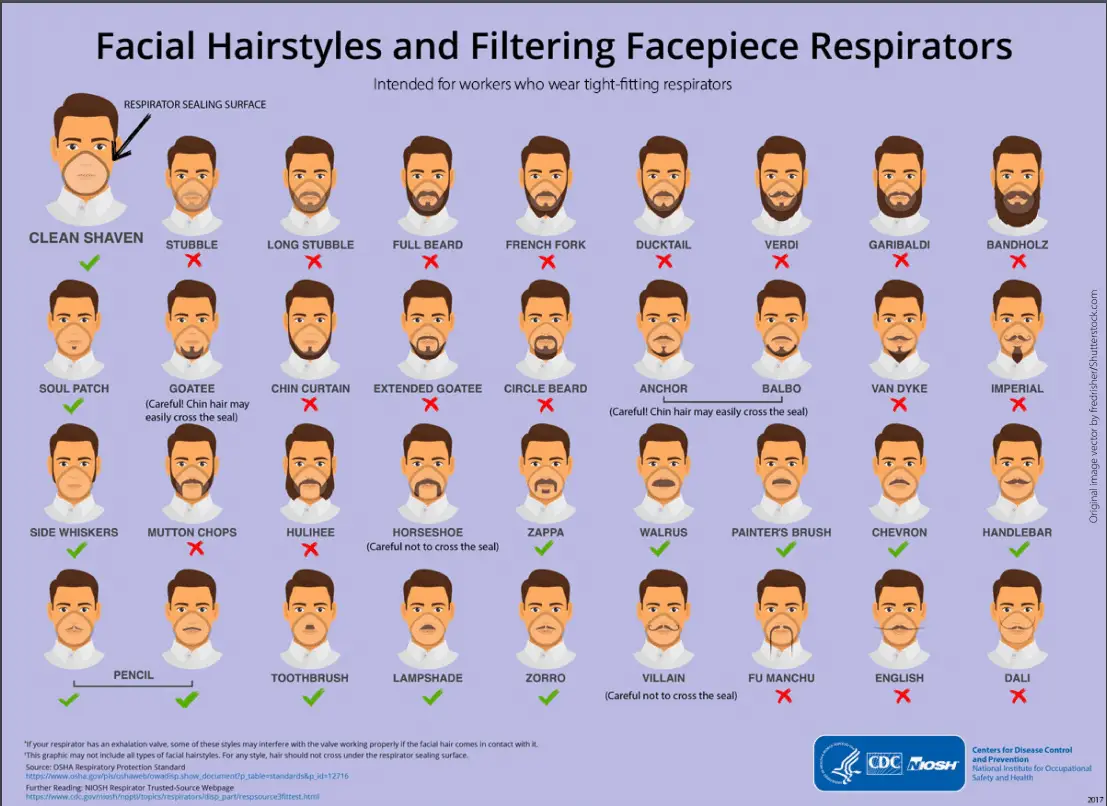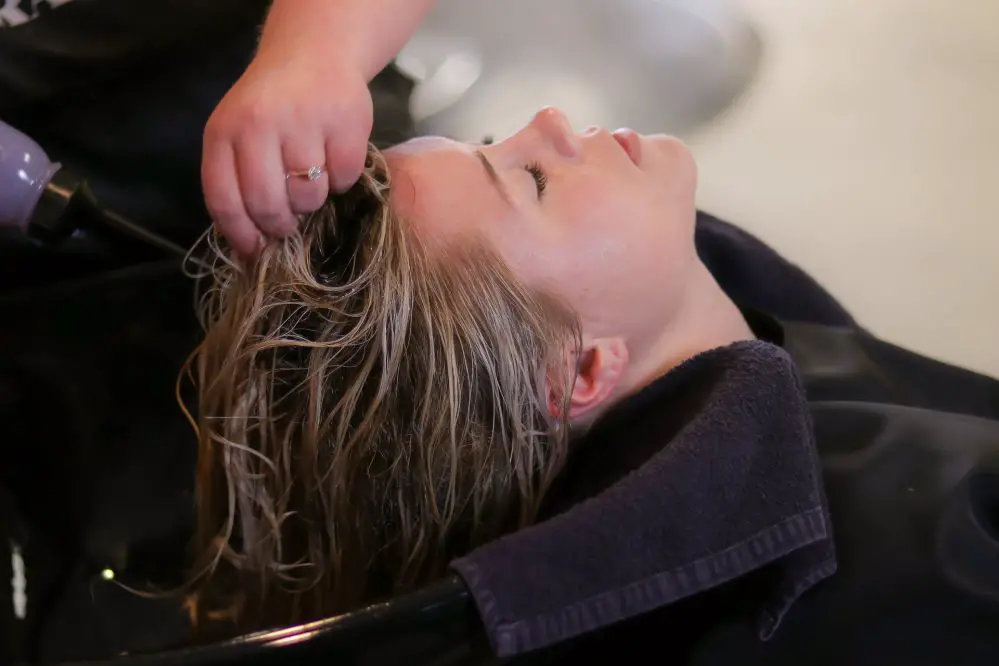
If you are looking to improve air quality in any type of beauty salon then stick around, you are in the right place. Be it nail bars, spas, hair salons, or multi-services beauty salons, a thing I have seen many beauty salons ignore is their air quality.
Improving air quality in your salon is not only good for you and your clients’ health but could see you retaining more clientele if you manage to create a relaxing environment with cool and fresh air.
Great customer experience and ambiance can set you apart from the competition in this industry and providing your patrons with good quality air is part of this.
The last thing anyone wants when getting a massage or their nails done is bad and toxic odors. No one also wants to get all sweaty and sticky because of high humidity levels.
To ensure good air quality in a beauty salon, a combination of a professional-grade air purifier, source capture system, and well-designed general HVAC system is key. A highly recommended air purifier for beauty salons is the EnviroKlenz Mobile Air System.
Besides using an air purifier, if you wanna get top-notch air quality in your salon, there are several other things you have to look into. Accordingly, n this blog post, I not only show you which air purifiers will get you results in your salon but I also walk you through all the nitty-gritty of getting things right when operating an air purifier in your beauty salon.
In case there is anything you may have not considered regarding why you should get a beauty salon air purifier, let’s start by taking an in-depth look at why it’s important to clean the air in your salon.
Why You Shouldn’t Think Twice About Improving The Air Quality In Your Beauty Salon
One of the main reasons anyone looks for a beauty salon air purifier or anything to that effect is because they are worried about the strong toxic odors in their salon. At times the odors might be so bad causing some people a headache or dizziness.
If you think that’s bad, what’s worse is your air quality issue in your salon is beyond just the toxic odors and noticeable immediate effects on your body. There are invisible, unnoticeable, and odorless pollutants in your salon that can cause serious long term health issues, especially for staff and anyone who is at the salon daily.
Countless research has found a host of dangerous air pollutants, present in a beauty salon’s hair. When it comes to air quality in your beauty salon, the main thing you should be worried about is you, your staff, and your clients’ health.
To see how serious this is, and to show you how important it is that you do something about your salon’s air quality, I have summarized in the table below, all the chemicals you will encounter in a beauty salon and the health risks they cause.
This table applies to all types of beauty salons including spas, nail salons, hair salons, and cosmetics stores.
Also, the focus in the table is on all toxic chemicals from treatments you do in your salon. So all these chemicals are present in your indoor air on top of all the other pollutants coming in from other non-salon sources.
Common Salon Air Pollutants
|
Airborne Pollutant |
Price |
|---|---|
|
Ammonia |
Eye, Mucous Membrane And Respiratory Irritation, Allergies |
|
Ethyl acetate |
Headaches And Irritated Eyes, Skin, Nose, Mouth, And Throat. |
|
Benzene |
Decrease In Red Blood Cells Leading To Anemia, Cancer, Drowsiness, Dizziness, Rapid Or Irregular Heartbeat, Headaches, Tremors, Confusion, Unconsciousness |
|
Dichloromethane |
Coughing, Wheezing, And/Or Shortness Of Breath |
|
Ethanol |
Pain And Irritation To The Nose And Throat, Headaches, Fatigue |
|
Isobutane |
Irritate The Nose, Throat, Dizziness, Lightheadedness, Irregular Heartbeat And Passing Out |
|
Isopropanol |
Sleepiness, Irritation To Eyes, Skin, Nose, Mouth And Throat, Headache, Dizziness, Confusion, Loss Of Coordination, Unconsciousness |
|
N-Hexane |
Dizziness, Giddiness, Slight Nausea, Headache, Polyneuropathy, Numbness, Muscular Weakness, Blurred Vision, Headache, And Fatigue |
|
Hydrogen Peroxide |
Irritation Of The Eyes, Throat, Respiratory Airway, And Skin |
|
Toluene
Formaldehyde
Dibutyl phthalate |
Sometimes Referred To As The “Toxic Three”. Headaches, Dizziness, Anxiety, Euphoria, Fatigue, Numbness, Irritation To Eyes, Nose, Throat, And Lungs, Damage To Kidneys, Livers, Asthma-like Attacks, Wheezing, Cancer, Allergic Reactions And Harm To Unborn Children During Pregnancy. |
|
Acetone |
Headaches, Dizziness, Irritated Eyes, Nose And Skin, Depression, Nausea, Vomiting |
|
Acetonitrile |
Irritated Eyes, Skin And Throat, Difficulty Breathing, Coughing, Asthma-like Attacks, And Wheezing And Allergic Reactions. |
|
Cyanoacrylate |
Irritated Eyes, Skin And Throat, Difficulty Breathing, Coughing, Asthma-like Attacks, And Wheezing And Allergic Reactions |
|
Ethyl methacrylate |
Asthma, Irritated Eyes, Skin, Nose, And Mouth. High Levels Can Affect Concentration. Exposure While Pregnant Can Affect Your Child. |
|
Titanium Dioxide |
Lung Fibrosis, Cancer |
I can expand on the table by getting into detail about what processes produce each of the airborne toxins, but I think the point that needs to be taken here is the serious health risks you put yourself and others in if you do not improve your Salon’s air quality.
Also stemming from the health issues, the other reasons you want to ensure good air quality in your salon is because you want to stay ahead and on top of regulatory authorities and you also want your staff to remain productive.
As workplace health and safety regulations improve, indoor air quality is increasingly becoming an important issue on many labor and environmental authorities’ lists and it’s a matter of time before beauty salons start having to comply with more demanding indoor air quality requirements if they wish to continue operating.
As a beauty salon owner, it’s only to your advantage, if you start improving your salons’ air quality before any air quality inspector comes knocking at your door. Next, if your employees get sick often, or maybe they always show up to work but seem sluggish in terms of performance, bad salon air quality might just be the reason.
There is no research backing this, but just the fact that you have bad air quality in your salon could see the adverse effects on your employees’ health eating into your business’s profits. So, you wanna look into improving your air quality to make sure you get rid of a factor among many that could negatively be affecting productivity.
One last crucial reason you should not think twice about your salon air quality is customer experience. I have passed by many salons and I feel even if your salon has awesome interiors, the toxic air that meets me as I walk past your salon’s entrance can send me searching for greener pastures.
Besides the smell, temperature and humidity are also a big factor for a lot of clients. If your beauty shop has a spa humidity can be an issue if you have a sauna or jacuzzi in there.
Many customers, especially if they have severe asthma or some respiratory condition, even avoid going to hair salons because of the fumes and odors on top of humidity issues.
When anyone enters a beauty salon of any sort, the last thing they want to feel is hot and sticky and with overpowering chemical smells shooting up their nose. You want your customers to come into a place that feels right and has a pleasant natural smell.
Fortunately, in addition to using a good salon air purifier, you can achieve all this through the various salon air quality improvement measures I am going to show you.
But before we go on, to summarize and quickly recap everything I have said here, there are 4 main reasons you seriously need to invest in improving the air quality in your salon and they are,
- To avoid the highly detrimental health effects of common salon air pollutants
- To ensure compliance with ever-changing workplace health and safety regulations
- To maintain you and your staff’s productivity and your salon’s derived profitability
- To provide an awesome customer experience to your clients
4 Powerful Air Purifiers For Beauty Salons
If you have read this far, I think by now you appreciate that improving air quality in your salon is something you can’t ignore. So, to help you get the best air quality in your salon, an air purifier is most certainly a much-needed appliance.
There are many air purifiers on the market and you might think getting one for your salon is just a matter of buying any odd model you can find online or at your local appliance store. Unfortunately for a salon, you have to be extra careful what air purifier you get.
With all the chemicals flying around your indoor air daily, it’s like you are running a mini air polluting factory and ordinary household air purifiers simply won’t work in a salon. They are just not built to handle heavily polluted air like in a salon environment.
The kind of air purifiers you should be looking at are heavy-duty purifiers. Depending on the size of your salon, you should be going for something close to an entry-level industrial air purifier.
The purifier should have filters capable of dealing with chemicals and fine air particles that are not visible to the naked eye. So go for devices packed with a lot of carbon for the chemicals and nanoparticle HEPA filters or Photocatalytic Oxidation (PCO) filters to deal with ultrafine particulate pollutants.
I have written about these different types of air purifiers in detail here.
Based on the criteria I have given, you can go on a wild goose chase to find the right air purifier for your salon but luckily air purifier manufacturers have recognized the need for air quality improvement in the beauty industry, and these days its much easier to find air purifiers that are tailor-made for beauty salons.
Some devices are stand-alone and you can just plug and play them while others have to be specially fitted for your environment. Keeping that in mind, here are 4 air purifiers that have proven effective for beauty salons.
1. EnviroKlenz Mobile Air System
First on the list is the largely overlooked EnviroKlenz air purifier. I must say in terms of looks, this air purifier is an ugly duckling. However, it greatly compensates for its looks through its performance. Actual tests run and comparison upon comparison by various independent users shows the EnviroKlenz outperforms other popular air purifiers like the IQ air and Molekule in its league.
This purifier does an awesome job with VOCs, Odors, and other dangerous airborne chemicals in a salon and works really well for particulate matter too. Its performance in filtering airborne toxins such as those you find in beauty salons is simply superior. The secret lies in the design of their filtration system.
Most air purifiers with an activated carbon filter, eventually off-gas once the filter is full because they simply absorb gasses and store them instead of destroying them. The EnviroKlenz on the other hand has an activated carbon filter that does not just absorb chemicals and odors but reacts with them and neutralizes them so they don’t return into the air.
The filter also uses much less carbon to achieve better results than other air purifiers. What’s more, if you are also worried about germs, bacteria, and viruses in the air, you can get a model that comes with UV light that irradiates and destroys such organisms. The UV light also destroys any organisms like mold that may grow on your HEPA filter, ensuring your device does not end up causing a recontamination of your air accordingly.
This air purifier is also very easy to maintain compared to most salon air purifiers. You simply wipe it, and to replace its filters, you open, remove and then reinsert new cartridges with no need for any tools. The downside of the EnviroKlenz air purifier is that it is limited to a salon size of up to 1000 square feet.
Based on a rule of thumb when it comes to determining air purifier sizes, this means if you want to get the most out of this air purifier, go for it if your salon size is no bigger than 800 square feet. If your salon is bigger than 1000 square feet you would rather go for a device with a bigger coverage capacity of at least 200 sq. ft. more.
If you have a space that’s approaching 2000 square feet then you might consider getting two air purifiers. The other downside with this purifier is that its HEPA filter only filters air up to 0.3 microns. There are purifiers with Hospital Grade HEPA filters that go as low as 0.01 microns.
This works against you if you have treatments in your salon that produce such ultrafine particles. For example, nail filing dust can get as small as 0.1 microns and this will pass right through a HEPA filter that can capture particles down to 0.3 microns. That said, this air purifier is still a powerful tool for improving air quality in your salon, especially when used together with other measures.
2. IQAir GCX MultiGas
The next air purifier worth considering is the IQAir GCX MultiGas (available on Amazon). IQAir has a range of air purifiers but their recommendations for the kind of pollutants you find in a beauty salon is the GCX MultiGas. It will deal with odors and chemicals and it captures particles down to 0.3 microns.
This air purifier does a great job but from research, I found the EnviroKlenz does better and so I had to put it here as my second choice.
If for whatever reason you fail to get the EnviroKlenz the GCX MultiGas is a good substitute. This air purifier’s coverage does not differ too much from others in its range. However, IQAir’s filters will cost you much more compared to the filters of air purifiers from other brands.
If you have multiple chemical sensitivities (MCS), you also cannot use the standard activated carbon filters and have to go for a VOC filter which filters a narrower range of chemicals in your salon air.
This is unlike the EnviroKlenz which has a single filter that caters to everyone including MCS sufferers. IQAir also uses potassium permanganate in the standard multigas filter and they admit this will trigger an allergic reaction for some people.
If that’s the case for you then you have to switch to their GCX VOC filter which is designed for more sensitive people. That said, don’t get me wrong, the IQAir GCX will do a good job in cleaning your salon’s air but if its downsides when it comes to MCS sufferers are a concern for you and your clients, rather go for another option.
3. Electrocorp Vocarb Air Purifier 8000
If you have a large salon, I’m talking 1500 square feet to about 2000 square feet, then the Electrocorp 800 Vocarb purifier is a good HEPA and activated carbon purifier option.
It is a portable air purifier specifically made for small industrial environments where gases, fumes, odors, chemicals, biological contaminants, dust, and other airborne particles. It can get rid of particles in your air that are as small as 0.1 microns, better than both the EnvironKlenz and IQAir GCX.
The air purifier doubles as a fume extractor and can also be connected to your HVAC. It has multiple green features, but what stands out most for me is that its Styrofoam free and has a metal casing.
This means minimal chances of any strange smells and off-gassing from your purifier and that it will work well even for people with multiple chemical sensitivities.
Besides adequate HEPA filtration, the Electrocorp 8000 Vocarb has a 48 pounds commercial-grade, super-activated carbon filter that easily gets rid of tough chemical fumes like benzene, hydrogen sulfide gas, TCE, solvent and paint fumes, and many more you will find in a salon.
Your carbon filter can also be modified to specifically remove certain compounds in your salon on request. Also, with much more carbon in weight than most purifiers, your carbon filter easily lasts much longer than other air cleaners.
You can also add a UV filter to this air purifier if you are concerned about airborne viruses. No air purifier is perfect, but from my research, this one is among those that will do an awesome job if you have a large salon ranging between 1000 to 2000 square feet.
It may seem pricey at first glance but it’s way more cost-effective than buying multiple smaller air purifiers, from a coverage and filter maintenance perspective.
Upwards of $300, the filters are certainly expensive if you need to buy them often. Fortunately, you get what you pay for here. The filters last long enough (over 6 months depending on your pollution levels) and you will see results.
4. Amaircare 4000
This is another great small to medium industrial space air purifier that will work great for a large salon. You can get it in two versions.
One comes with a HEPA filter and a 7-pound carbon filter with the option of a foam pre-filter while another comes with only a 30-pound carbon filter.
The HEPA version is for you if you are concerned about both chemical and particle pollutants in your air while the pure carbon option is only for dealing with chemicals, fumes, VOCs, and other gaseous pollutants.
This purifier can clean air in a room of up to 2600 square feet. It has steel housing, making it generally environmentally friendly as it’s designed not to off-gas. The Amaircare 4000 (product link to Amazon) is cheaper than the Electrocorp 8000 air purifier.
However, you cannot hook it up to your HVAC and it does not have a fume extractor arm feature. What is also annoying is how you have to choose whether you want an air purifier that deals largely with particles of chemicals.
Nonetheless, you may be in a situation where you just want something that gets rid of airborne chemicals, and if that’s the case, certainly go for the pure carbon option of this purifier.
Amaircare is well known in this industry for quality and performance and you won’t be disappointed. Your filters should cost you just under $300 and should last you over 6 months depending on how polluted your salon’s air is.
So these are the four air purifiers I know get results in a salon setting. Of course, there are other options out there. For instance, I found the Airvia Pro 150 or Aerovax Systems’ The One That Works.
However, from my experience and research, I am always led back to the above four when considering purifiers for a salon setting. If you want good results and something that works, go for the 4 options I have mentioned or upgraded versions of these options.
3 Steps To Get The Best Air Quality With Air Purifiers In Your Beauty Salon
Now that I have shown you the top five air purifier options that I found worth trying for your salon, the next thing you need to do is to know how to use an air purifier effectively in a salon setting.
As much as you may notice improvements just by installing a good quality salon air purifier, an air purifier, unfortunately, won’t get you optimal air quality on its own.
For best results in a beauty salon, besides positioning your air purifier properly and getting the correct size air purifier, your air purifier needs to be used with devices such as source-capture ventilators, extractors, HVAC filters/air purifiers, dehumidifiers, and air conditioners.
I have written a lot about air purifier positioning and sizes for best results already so here I will focus on the additional equipment you need and how they work together with your air purifier.
The ideal salon air purifier setup is a system that considers three aspects, namely the breathing-zone, the workstation/room, and lastly the entire salon building.
Putting in place such a system with all these appliances may not be feasible in every salon setting. Regardless, the idea here is to set up everything you possibly can to reduce pollution in your salon as much as possible.
Step 1: Clean The Breathing-Zone
The breathing zones of your salon are places where the treatments are being done. So this could be your hairstyling chair, manicure table, or massage table. To supplement your air purifier, it’s recommended you install source capture ventilators or fumes/particle extractors directly where you treat your clients.
There are a variety of salon specific source capture systems out there. You have ceiling-based extractors with a movable pipe which is usually called an arm and also stand-alone extractors/source capture systems. Specifically for nail bars, you also have manicure tables with built-in extractors or portable tabletop fumes and particle extractors.
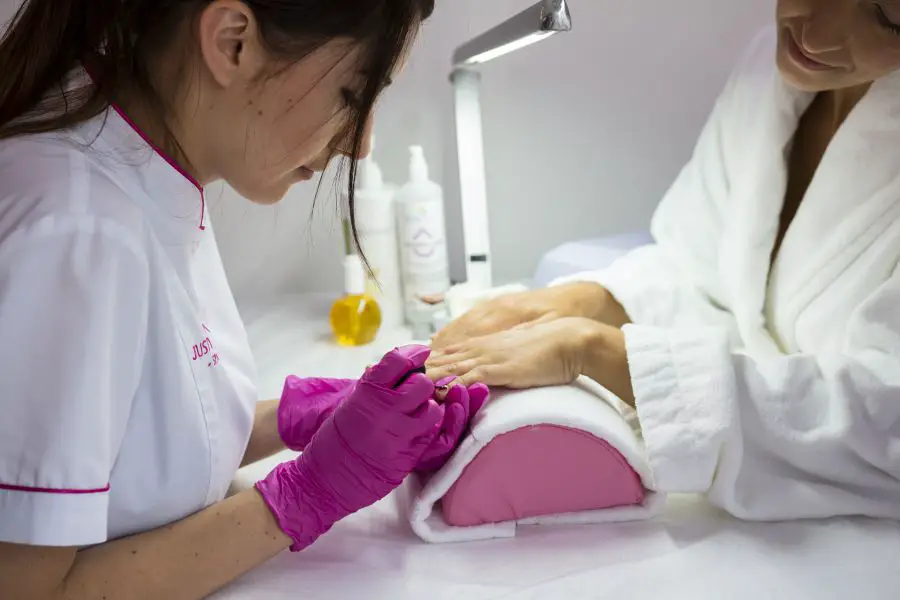
All these suck some airborne chemicals and particles immediately as you are carrying out treatment on your client. I think I should mention as a side note that you can use the words extractors and source capture ventilators interchangeably.
Step 2: Clean The Room/Workstation
The room or workstation aspect of your salon air purifying system refers to an individual room in your salon where a beauty treatment is being carried out. So this could be the sauna room, massage room, storage room, nail barroom, or a room where multiple types of treatments are being carried out.
Whatever your room set up, when looking at the room aspect of your system, this is where your chosen air purifier fits in. Your air purifier works to clean the air in the entire room and captures the airborne particles and chemicals that your source extractor failed to deal with.
Now when it comes to some rooms like saunas, you cannot exactly use an air purifier as the room is just too humid. However you need to control the humidity in these rooms as if it mixes with chemicals and particles from other parts of your salon, you just worsen your air quality.
To control humidity, if this applies to your salon, you will have to install a dehumidifier in or near rooms where the humidity in your salon is being generated. Reducing humidity will also help improve the performance of your air purifiers placed in other rooms of your salon as you avoid wearing out your purifiers filtration system with moisture.
Step 3: Clean The Entire Building
Lastly, the final aspect of your salon air purification system is an appliance that works to clean air across your entire salon. Usually, this is an HVAC fitted with a HEPA filter or an HVAC based air purifier.
For a lot of people, this part of the system will be a challenge to put in place as you might find yourself in a situation whereby you have no HVAC in your salon and it’s just not feasible to do a major renovation to install an air exchange system.
But if you can fit in an HVAC based air cleaner or air exchange system, this is the final line of defense against pollutants in your beauty salon. Once pollutants have been minimized in your breathing-zones and rooms, whatever else is lingering around across your building can then be dealt with by your HVAC air cleaner or an air exchanger.
Additionally, your entire building appliances help increase airflow in and out of your salon which boosts the rate at which air pollutants pass through your air purifiers and gets you cleaner air faster.
Furthermore, besides your air purifier filters, some of your other salon air purification appliances like your HVAC air cleaner will also have filters such as activated carbon and HEPA filters among others to effectively capture air pollutants in your salon.
So these are the three major steps you need to take to get the most out of your salon air purifier. This is the ideal system but in many situations, this 3 step system may not be practical.
It may be a challenge for you to have large specialized salon tables or expensive ducted air extraction and filtration systems installed.
If this is the case my opinion is to invest in the best possible room air purifier as an alternative. If your salon has multiple rooms, you also want to get an air purifier for each room.
Once you have air purifiers covering your facility adequately then you can look into getting some stand-alone source capture systems. You wanna get some source extractors mainly for the most air polluting treatments carried out in your salon.
Additional Equipment To Ensure Good Air Quality In Beauty Salons
Now that you have seen and know of the equipment involved in an ideal salon air purification setup, you might be wondering which brands of this equipment to go for.
Just to recap the additional equipment as I pointed out earlier includes extractor/source capture ventilators, dehumidifiers, and an HVAC air cleaner. Here are my suggested options for each of these additional appliances.
1. Source Capture Systems
When looking for a good source capture system, based on Safety Guidelines for Controlling and Minimizing Inhalation Exposure to Nail Products published by the Professional Beauty Association (PBA), you should be going for one that draws at least 50 cubic feet of air per minute.
For this airflow capacity, your source capture system should be at least 6 inches from where your beauty treatments generate vapor, dust, and other salon air pollutants.
Source capture systems are your first line of defense from air pollutants generated within your breathing zone. Whether it’s air contaminants from hair bleaching or smoothing, nail filing, nail grinding, or lash extensions there is a source capture system for your situation.
You can get stand-alone systems with extraction arms or systems that sit on your table or that are built into your table. Some great salon extractor options I found for the breathing zone area include systems from HealthyAir® Source Capture Systems and VODEX .
HealthyAir does well with arm extension based systems while Vodex also has some great built-in table extractors for nail salons. For nail salons, you can also go for simpler portable table based options like the Markatt Nail Dust collector on Amazon.
Devices from these manufacturers have great filtration systems designed to protect you the salon owner, your employees, and clients against the dangers of inhaling harmful fumes or dust. This is with the exception of portable tabletop nail dust extractors which are designed to only extract dust.
So if you want a source capture system that extracts both particulates, gases, and fumes from your breathing zone, be prepared to invest in something similar to what you would get from VODEX and HealthyAir.
2. HVAC Air Cleaner
If you have an HVAC system in your Salon, getting an air cleaner fitted to it is a no brainer. The HVAC air purifier options range as widely as the room air purifiers do. Generally for salons experts recommend you install an HVAC unit that contains a multi-stage filtration system.
Usually, such air purifiers contain HEPA and Electronic air filters. I have written extensively about HVAC air purifiers here. They are also commonly referred to as whole-house air purifiers.
Of the numerous options, for salons, I recommend you look at HEPA + Activated Carbon HVAC air cleaners from Lennox or Aprilaire. They are among the most robust HVAC air cleaners. To properly fit an HVAC air cleaner, it’s best to get a professional to install it for you. They will know exactly what size you need for your type of HVAC whichever brand you go for.
4. Dehumidifier
If you have humidity issues in your beauty salon, you are likely no stranger to the many issues high humidity levels cause. Firstly, for certain beauty treatments, high humidity levels can be a nuisance. One such procedure is eyelash extensions.
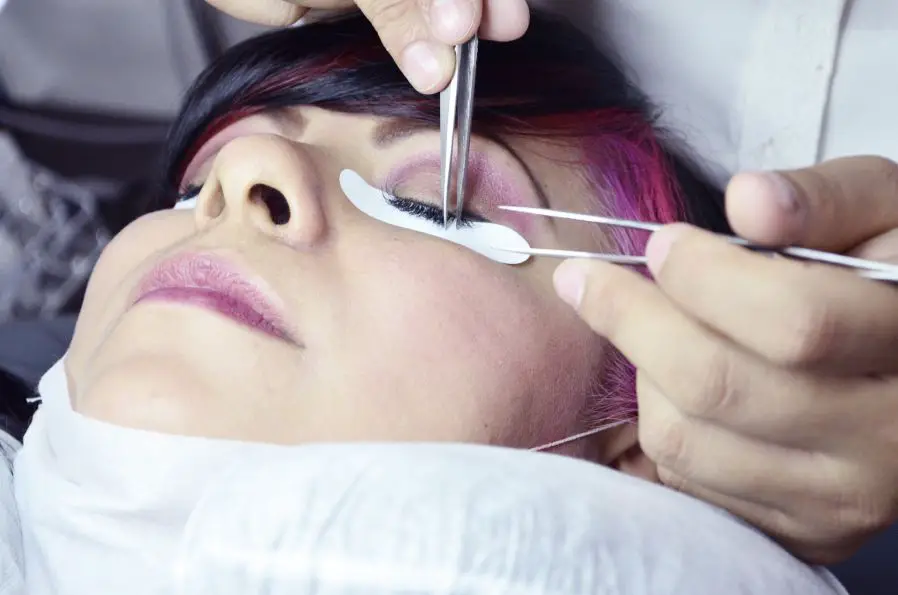
When trying to attach eyelash extensions on your clients’ lashes, high humidity can make it take longer for lash glue to adhere and also reduce the time your lash extension will last. This can be bad for business, sending your clients to look for someone who can do it better if it happens often.
Then when it comes to air quality in terms of health, high humidity tends to make everyone in your salon feel uncomfortably sticky and creates a breeding ground for all sorts of airborne and surface contaminants.
These include surface mold and mildew among other bacteria that eventually become airborne and contribute to bad air quality. The situation is even more serious if you have a water lounge, pool, hot tub, or any major water facility.
To solve your humidity issues in a beauty salon setting you need to have a dehumidifier. Thankfully there are many great options out there. Like air purifiers, you have to choose one according to the room size of your salon.
Of the many dehumidifiers, here are two options worth your while. The first option is for you if you do not have serious humidity issues. This is Amazon’s home brand humidifier, the AmazonBasics Dehumidifier.
It will suck up to 50 pints per day of water from your air in a space of 4000 square feet with a standard ceiling height of 8 feet. This is more than ideal for a small to medium-sized salon. It has a reservoir with a smart overflow protection feature that works to prevent your dehumidifier’s reservoir from overflowing and making a mess.
The AmazonBasics Dehumidifier also has a timer to automatically turn it on and off and an auto-restart feature that enables it to turn itself on after a power outage. It can also sense your humidity levels and automatically turn on and off to maintain your selected humidity level. Through this feature, you also save on energy consumption.
Option number two is for you if you need dehumidification on a commercial level for your salon. You should certainly consider this option if you have a large water facility like a pool, sauna, or hot tub. The dehumidifier we are looking at here is the AlorAir SGLR 125 PPD Smart WiFi Dehumidifier.
It can remove 125 pints of water per day from the air in a salon of up to 3000 square feet and can run for days on end without being checked due to its sheer strength. The bummer is that it does not have a reservoir but rather needs a hose connected to a drain to get rid of the water it sucks out of your air.
Though it has numerous smart features, it’s very easy to use. It’s a sturdy device and fit for commercial use. With this dehumidifier, you should be able to get and maintain the right humidity level in a large beauty salon with high humidity levels in less than 48 hours.
I could get into more details about salon dehumidifiers but with my brief guide here you should be covered in terms of ensuring good humidity levels in your salon. Should you have any questions about any of the additional tools to ensure good quality air in your salon, feel free to ask in the comments.
Expected Challenges When Improving Your Beauty Salon’s Air Quality
Should you decide to install a fully-fledged salon air purification system, you may face some challenges. The first issue for a lot of people is the financing, especially if your salon does not already have an HVAC system.
You are looking at a few thousand dollars for a comprehensive system. Ways around this are to look for ventilation companies or equipment suppliers that will allow you to pay for your new air purification equipment in installments. Some people also advise increasing the price of your services a little.
You can justify this to your clients by communicating to them that it’s for the good of everyone’s health and that installing good ventilation for clean indoor air keeps you compliant with environmental authorities and allows you to continue providing your services to them peacefully.
The next thing you might face is customers complaining about the noise the new devices make, especially if you run a spa where some people come to relax and get away from the noise. You can usually overcome this problem by playing background music in your salon.
If you have to do some renovation, move things around quite a bit, or close shop to do installations, people may also complain about the inconvenience. However, this is short-lived and such complaints can be acceptably managed by communicating that you are improving the salon for their benefit.
Next, as I have alluded to earlier, you may also face issues of space. You may just not have enough room to add extra appliances in your salon without it getting overcrowded. If that’s the case, you can look into getting ceiling mounted air purifiers and extractors. This should save you a lot of floor space.
Lastly, like with all other air purifiers, you will need to maintain your salon air purifiers. You have to know how to and when to change your filters and how to keep your air purification equipment clean.
You can set reminders and maintenance schedules to keep up. Alternatively, you can get an air purifier with an automated filter change indicator. In fact, your entire salon air purification system can consist of smart devices that tell you when and what component you need to change or maintain to keep your system running well.
List Of Companies Providing Beauty Salon Air Quality Solutions
I have shown you some of the equipment I found to be excellent options for keeping the air in your salon clean. I have also shown you how important it is to make sure you clean the air in your salon.
The equipment I selected is a collection of air quality equipment that has been proven to get results in salons. That said, there are a lot of other good options beyond my list.
Accordingly, if you want to do more digging and research beyond what I have shown you, below is a list of salon air quality solution suppliers that I found helpful and I trust you will too.
Salon Air Quality Systems Buyers’ Guide
|
Supplier Name |
Air Quality Solution Provided |
|---|---|
|
Air Purification & Ventilation Products |
|
|
Air Purification and Extraction |
|
|
Nail Stations Air Purifier Tables |
|
|
Air Purification and Extraction |
|
|
Dust Collectors |
|
|
Heavy Duty Air Cleaners |
|
|
Nail Filtration Systems |
|
|
Hair Salon Extractors |
|
|
Ventilation Company |
6 Extra Steps To Improve Your Beauty Salon’s Air Quality
Once you have decided on what air quality setup to implement or if you already have a system up and running, the journey to cleaner salon air does not end there. You also need to make sure you have a daily cleaning routine and rules to minimize indoor pollution.
Here are 5 examples of additional measure you should take in addition to air cleaning equipment for better air in your salon:
1. Use Products With The Least Hazardous Chemicals
When choosing chemicals for procedures, where possible go for eco-friendly alternatives. For chemicals that have no eco-friendly alternative, go for options that get the job done with lower toxic emission levels.
2. Close Bottles Tightly
This will be hard to do in the middle of treatments but once you have finished styling or manicuring someone, make sure you close all product lids and bottle tops tightly to avoid spills and extra chemicals unnecessarily escaping into your salon’s air.
3. Do Not Use More Product Than Needed
This is straightforward. The more chemical products you use the more air pollutants from those products are likely to get into your air. So don’t just cut down on the amounts of product you use per treatment just to save money but also do so to minimize daily emissions in your Salon.
4. Wear Personal Protective Equipment (PPE)
Another thing you can do to protect yourself, personnel, and clients from pollutants is to wear goggles, masks, aprons, and other protective gear. PPE provides an extra layer of protection to minimize toxic chemicals and pollutant particles in the air of your salon from getting into your eyes, nose, and mouth.
5. Use Tight Lid Trash Cans
Cotton balls, swabs, paper towels used to wipe off the excess product during treatments are another source of salon emissions. If disposed of in uncovered bins whatever chemical they absorbed leaks back into your salon air.
6. Follow Product Disposal Instructions
Lastly, to help manage your pollution levels, you want to make sure that products in your salon are disposed of correctly. Some products and byproducts of beauty salon treatments cannot simply be placed in the trash can within your salon until you take the day’s or week’s trash out.
Some have to be sealed extremely well, while others may even need specialized waste management services to properly dispose of them. Whatever the case, you minimize indoor air pollution from your salon waste if you follow all the recommended salon products and general waste disposal guidelines.
So these are all the additional steps you need to take to improve your beauty salon’s air quality. Combine these six supplemental measures with a good salon air purification system and you are pretty much set towards getting fresh air in your salon.


